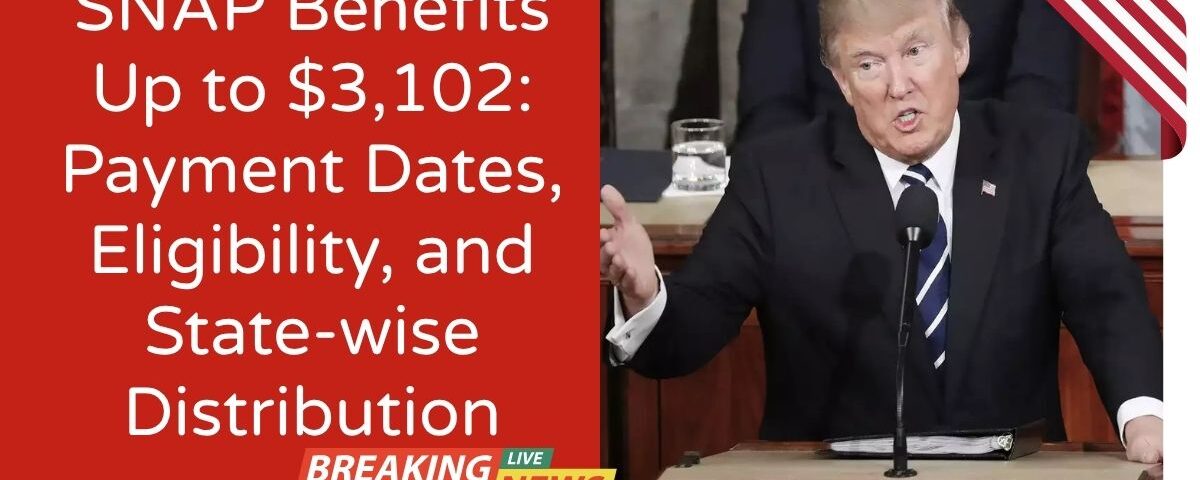The Supplemental Nutrition Assistance Program (SNAP), commonly referred to as Food Stamps, provides monthly financial assistance to low-income households for purchasing nutritious food. In July 2025, recipients across different U.S. states and territories are receiving their benefits on varying dates depending on local schedules and eligibility criteria.
Higher SNAP Benefits in Alaska, Hawaii, and U.S. Territories
If you’re a SNAP recipient living in Alaska, Hawaii, Guam, or the U.S. Virgin Islands, you may qualify for higher benefit amounts than recipients in the continental U.S. For example, a family of eight in Hawaii may be eligible for up to $3,102 in monthly SNAP assistance. However, actual benefit amounts depend on your household income and other financial resources.
Hawaii SNAP Payments: July 3 or 5
In Hawaii, SNAP benefits are distributed based on the first letter of the recipient’s last name:
- Last names starting with A–I: Paid on July 3
- Last names starting with J–Z: Paid on July 5
The maximum SNAP benefit of $3,102 is only granted to households of eight people, and even then, it may be reduced if the household has other sources of income or assets.
SNAP Maximum Benefit Amounts by Household Size
Here’s a breakdown of maximum monthly SNAP amounts based on the number of people in a household:
| Household Size | Maximum Benefit |
|---|---|
| 1 person | $517 |
| 2 people | $948 |
| 3 people | $1,357 |
| 4 people | $1,723 |
| 5 people | $2,046 |
| 6 people | $2,456 |
| 7 people | $2,714 |
| 8 people | $3,102 |
| Each additional person | $388 |
SNAP Payment Schedule for July 2025 by State
Each state has its own distribution window. Some, like Connecticut and New Hampshire, finish early, while others, such as Florida and Texas, continue until the end of the month:
- Alabama: July 4–23
- Arizona: July 1–13
- Arkansas: July 4–13
- California: July 1–10
- Colorado: July 1–10
- Connecticut: July 1–3
- Delaware: July 2–23
- Florida: July 1–28
- Georgia: July 5–23
- Hawaii: July 3–5
- Idaho: July 1–10
- Illinois: July 1–10
- Indiana: July 5–23
- Iowa: July 1–10
- Kansas: July 1–10
- Kentucky: July 1–19
- Louisiana: July 1–23
- Maine: July 10–14
- Maryland: July 4–23
- Massachusetts: July 1–14
- Michigan: July 3–21
- Minnesota: July 4–13
- Mississippi: July 4–21
- Missouri: July 1–22
- Montana: July 2–6
- Nebraska: July 1–5
- Nevada: July 1–10
- New Hampshire: July 5
- New Jersey: July 1–5
- New Mexico: July 1–20
- New York: July 1–9
- North Carolina: July 3–21
- Ohio: July 2–20
- Oklahoma: July 1–10
- Oregon: July 1–9
- Pennsylvania: First 10 working days of July
- South Carolina: July 1–10
- South Dakota: July 10
- Tennessee: July 1–20
- Texas: July 1–28
- Utah: July 5, 11, 15
- Virginia: July 1–7
- Washington: July 1–20
- West Virginia: July 1–9
- Wisconsin: July 1–15
- Wyoming: July 1–4
- Guam: July 1–10
- Puerto Rico: July 4–22
- District of Columbia: July 1–10
Conclusion
SNAP provides critical food assistance to millions across the United States and its territories. While some states have already issued benefits, others will continue to do so until late July 2025. Eligible households, especially large families in Alaska, Hawaii, Guam, or the Virgin Islands, may receive higher benefit amounts—up to $3,102 for eight people. Make sure to check your state’s payment dates and monitor your accounts for deposits to help cover your daily food expenses and bills.
Frequently Asked Questions
1. Who qualifies for the $3,102 SNAP payment?
Only households with eight members that meet income and resource limits in high-payment states like Hawaii or Alaska may qualify for the maximum benefit of $3,102.
2. Why do SNAP benefits differ by state or territory?
SNAP payments vary based on cost of living, local rules, and whether the area is a U.S. territory like Guam or Puerto Rico, where payment amounts are typically adjusted higher.
3. How are Hawaii SNAP payments scheduled?
Hawaii SNAP benefits are issued based on the first letter of the recipient’s last name:
- A–I: July 3
- J–Z: July 5
4. What should I do if I didn’t receive my SNAP payment?
Contact your local SNAP office or check your EBT account. Delays may occur due to holidays or administrative issues.
5. Can I still get SNAP benefits if I have other income?
Yes, but your monthly SNAP amount will be reduced based on your total household income, assets, and other benefits you may receive.

